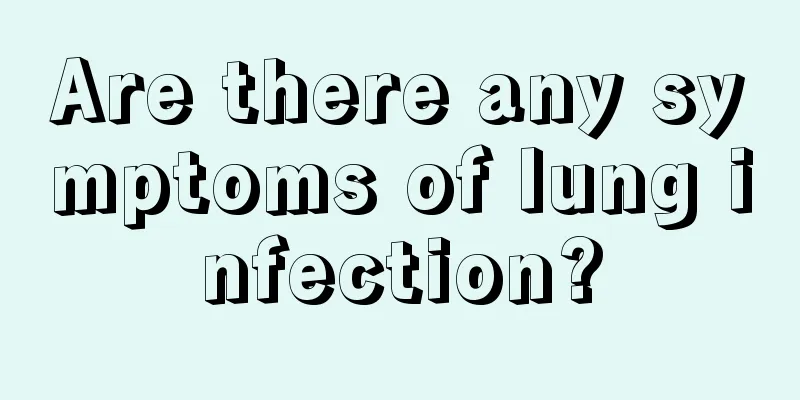Are there any symptoms of lung infection?

|
The lungs are the main processing center for people's breathing. The inside of the lungs is composed of countless bubbles, and the surface of the bubbles is covered with capillaries. The main function of the bubbles is to exchange oxygen and carbon dioxide in the blood. Therefore, lung diseases can affect breathing efficiency and cause serious damage to the body, especially lung infections which are the most harmful. Let’s take a look at the symptoms of lung infection. What are the symptoms? Difficulty breathing, temperature changes, cough, increased sputum volume and characteristics. Specific symptoms: 1. Pay attention to inhalation injuries, tracheotomy or intubation, aspiration, pulmonary edema, atelectasis, shock, surgical anesthesia, invasive wound infection, suppurative thrombophlebitis, etc. 2. Pay attention to breathing difficulties, temperature changes, cough, increased sputum volume and sputum characteristics. Clinical symptoms should be differentiated from burn toxemia or sepsis. 3. Physical examination. Patients with severe burns often have burns on their chests, making it difficult to obtain accurate chest signs. Therefore, careful examination should be performed to check for any respiratory changes or rales. 4. To identify the infecting bacteria, airway secretion cultures should be performed regularly, preferably bronchopulmonary lavage fluid cultures, to prevent contamination. 5. Chest X-ray. The diagnosis of most lung infections after burns depends on X-ray examination. Chest X-rays should be performed routinely after injury, and regular follow-up examinations should be performed thereafter. The X-ray manifestations of pneumonia can be divided into three types: small focal lesion, large focal lesion and lobar lesion, with small focal lesion pneumonia being the most common. Treatment options 1. Clear the primary lesion. Patients with inhalation injuries or severe burns of the face and neck should strengthen airway management, effectively clear airway secretions and necrotic and detached mucosa, and promote healing of airway wounds. In cases of hematogenous pneumonia, sepsis should be controlled and distant lesions should be cleared. 2. Based on the results of sputum culture or bacterial examination of the wound or blood, the drug should generally be administered intravenously. Antibiotics can also be inhaled by nebulization or an appropriate amount of antibiotics can be added to the lavage fluid. 3. If concurrent respiratory insufficiency occurs, treat it as respiratory insufficiency. |
<<: What are the acupuncture points that help remove freckles?
>>: What are the symptoms of severe cold?
Recommend
What are the dangers of sleeping with dentures
Wearing dentures can help us solve oral problems ...
What are the disadvantages of thoracoscopy in the treatment of esophageal cancer?
Esophageal cancer is a malignant digestive tract ...
The incidence of prostate cancer varies from place to place. How to prevent prostate cancer?
Warren Buffett, the American stock market tycoon,...
How to diagnose lung metastasis from liver cancer
Liver cancer can easily metastasize to the lungs,...
Does Pu'er tea reduce internal heat?
Pu'er tea is a specialty tea of Yunnan, and...
Is bladder cancer blood contagious?
Nowadays, people's living standards have impr...
How long can one live with ascites in advanced ovarian cancer
How long can you live with ascites in advanced ov...
How to use a Band-Aid?
As medicine becomes more and more advanced, the t...
How to freeze fresh yellow peaches
Peaches are a kind of fruit suitable for people o...
The most common early symptoms of skin cancer
Skin cancer is one of the most common skin diseas...
Nutritional products for middle-aged and elderly people
Nutritional supplements for middle-aged and elder...
How to cut sausage
Chinese sausage is a very delicious food and also...
How to diagnose early gallbladder cancer
Doctors and patients should pay more attention to...
How to relieve pain in late stage nasopharyngeal carcinoma
Many cancers will have symptoms of pain in the la...
I drank alcohol while getting the rabies vaccine
Although dogs are human beings' most loyal fr...









